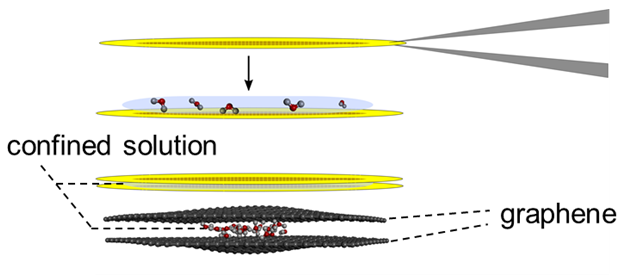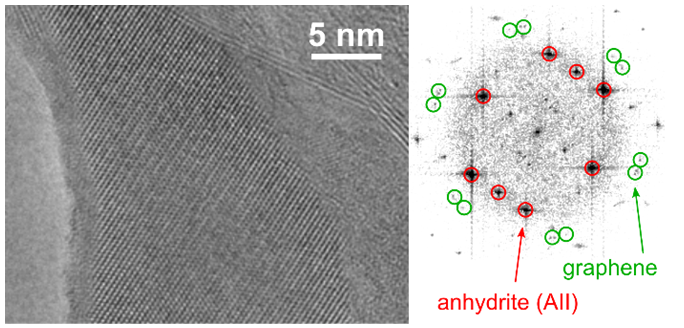Graphene liquid cells
Liquid cells are used to study liquids in an enclosed environment in the transmission electron microscope (TEM). The encapsulated liquids are isolated from the high vacuum (10-5 Pa) in the TEM. Typically, graphene is used to confine the liquids because of its remarkable properties like high thermal and electrical conductivity. Furthermore, graphene only adds low contrast to the recorded images.
In our lab, we prepare graphene pockets by placing a drop of liquid on a first grid with CVD graphene. Afterwards, we place a second grid with graphene on top, in order to encapsulate the liquid completly. We use the liquid cells to investigate in-situ crystallization, as it was shown in [1] for the quasi 2-dimensional CaSO4 in the anhydrite AII phase.


[1] Lehnert, T.; Kinyanjui, M. K.; Ladenburger, A.; Rommel, D.; Wörle, K.; Börrnert, F.; Leopold, K.; Kaiser, U. In situ Crystallization of the Insoluble Anhydrite AII Phase in Graphene Pockets. ACS Nano, 2017, 11, 7967-7973
Prof. K. Leopold, Ulm University
DFG and MWK Baden-Württemberg in the frame of the SALVE project
